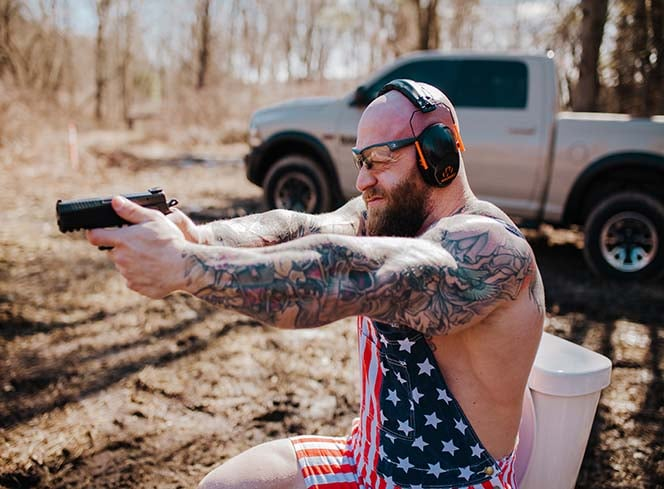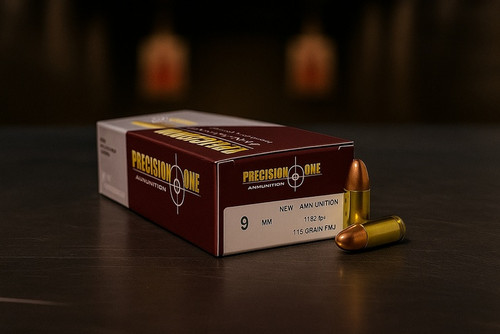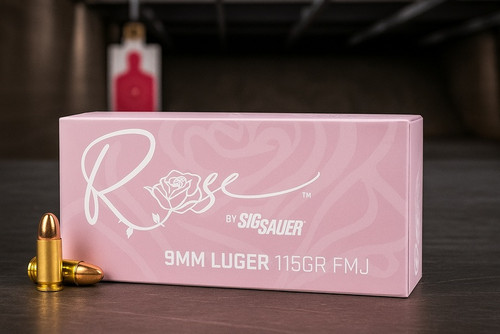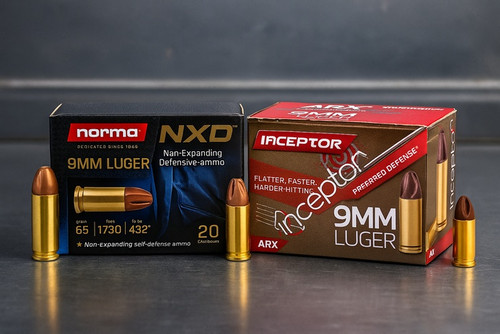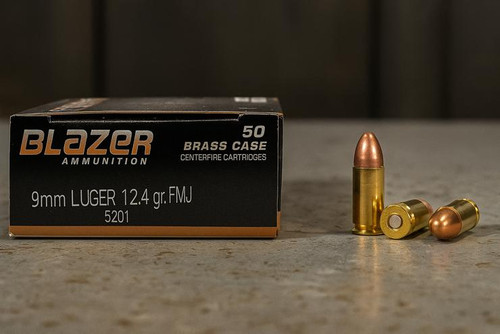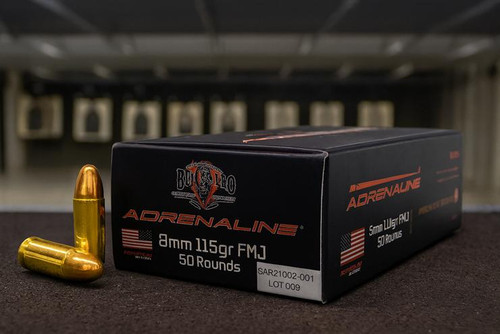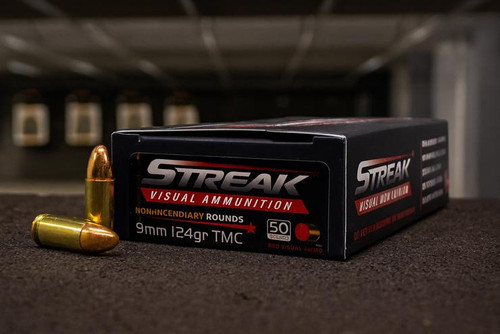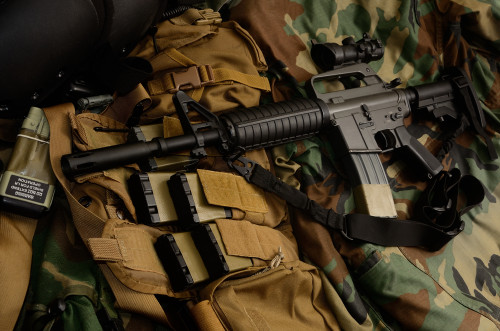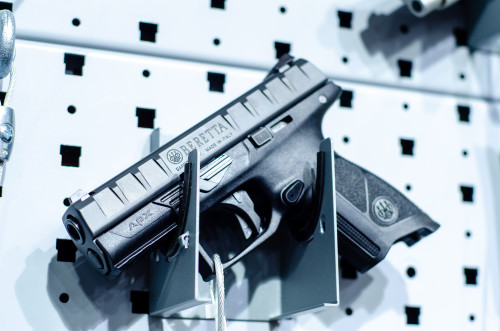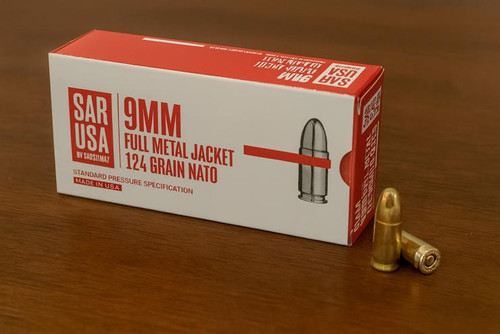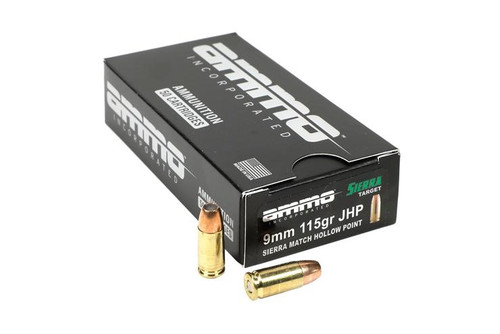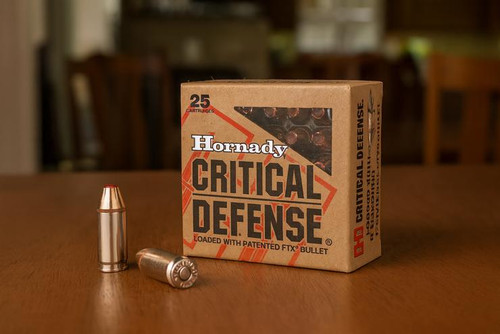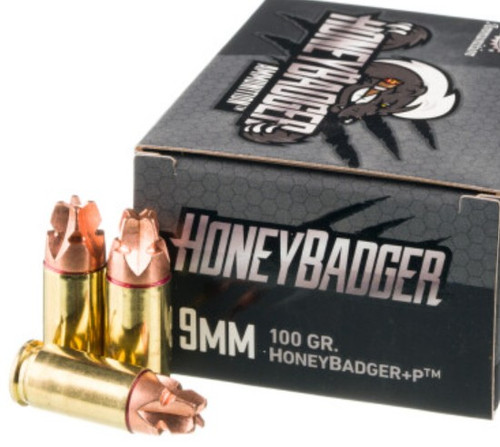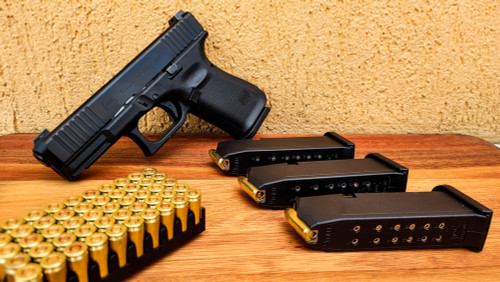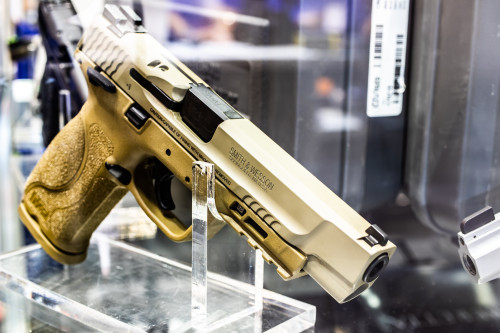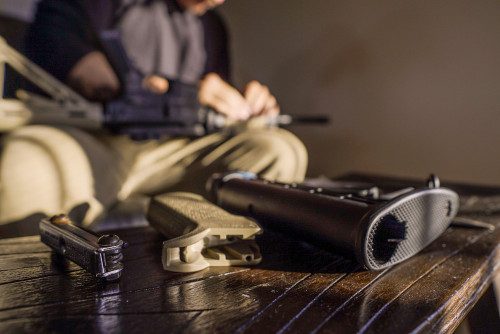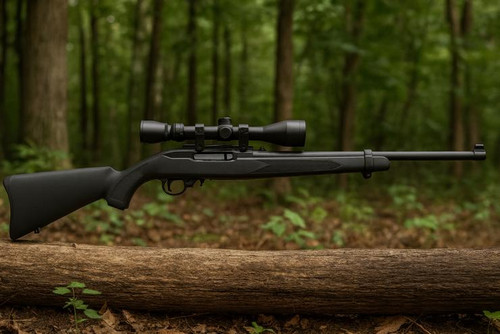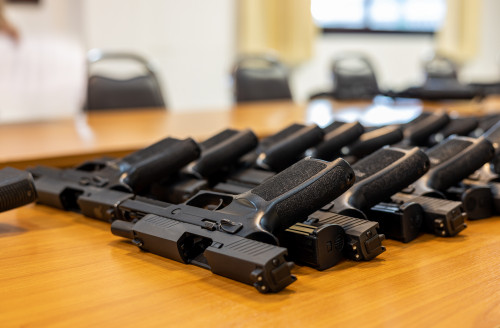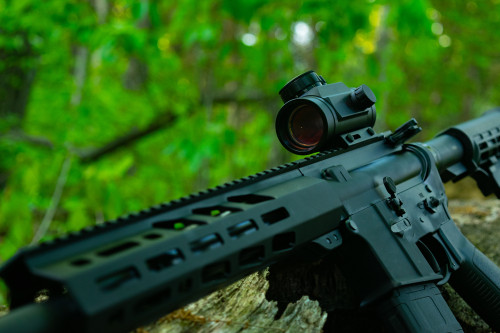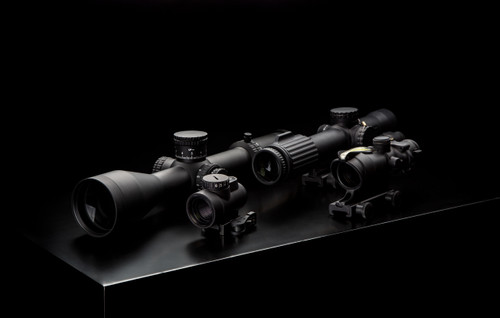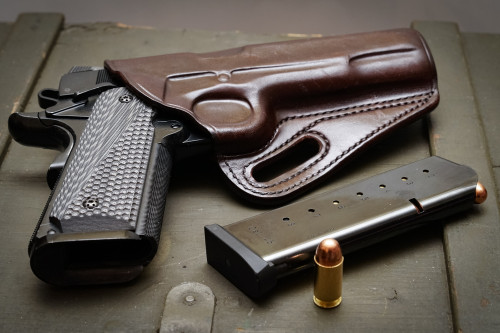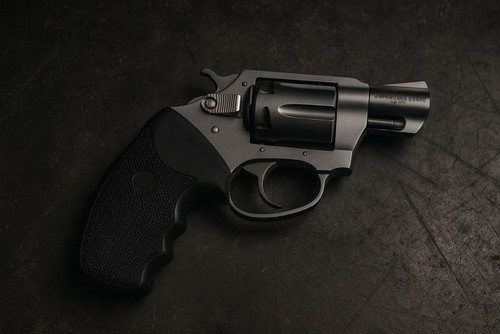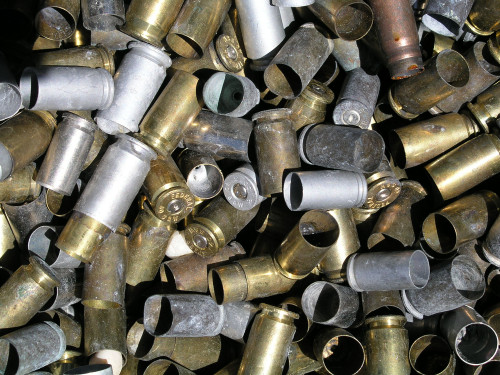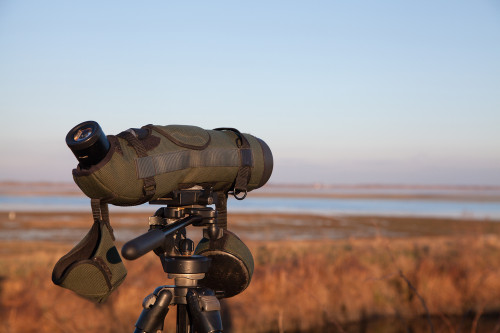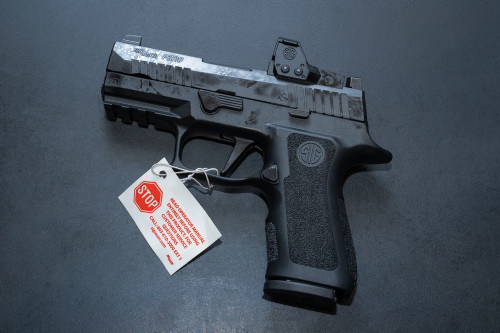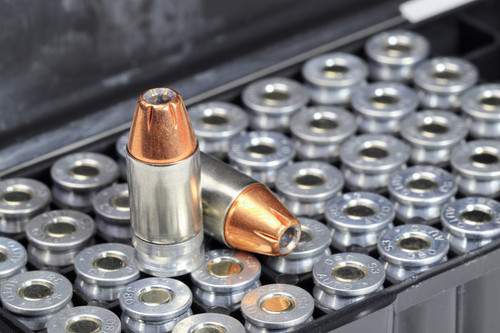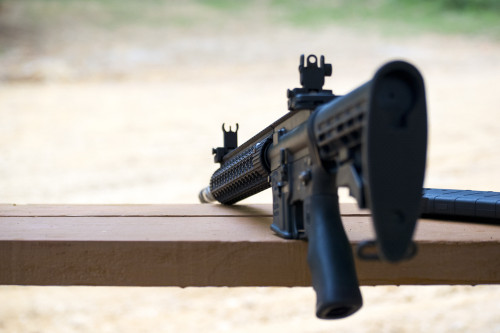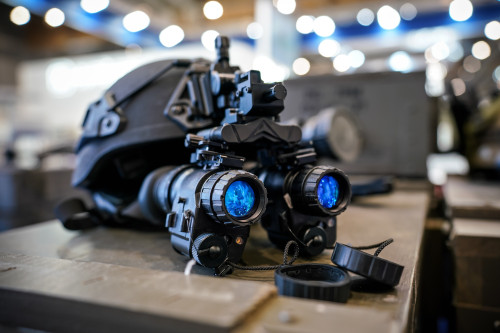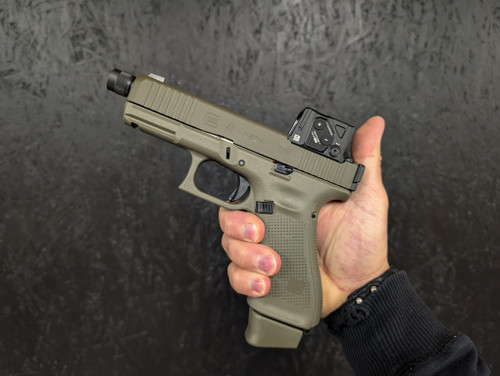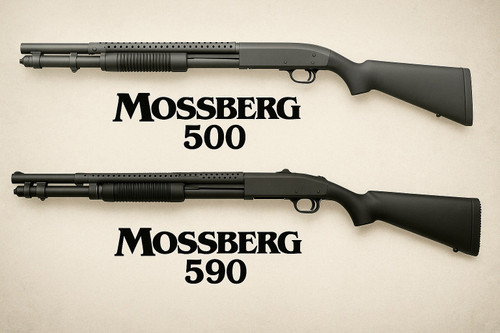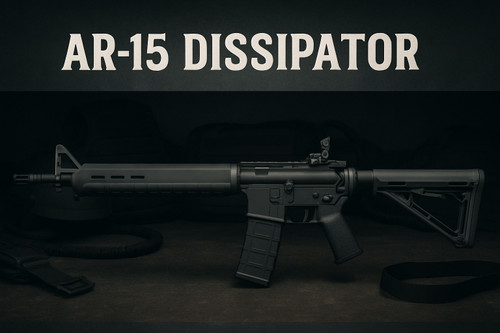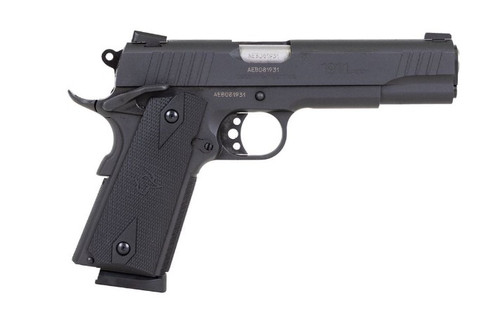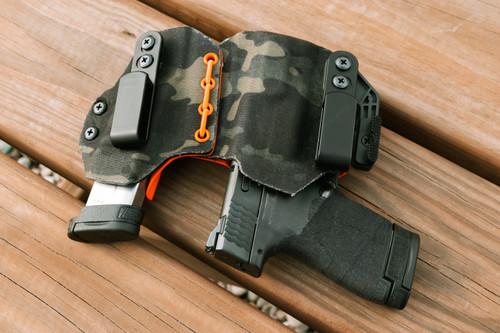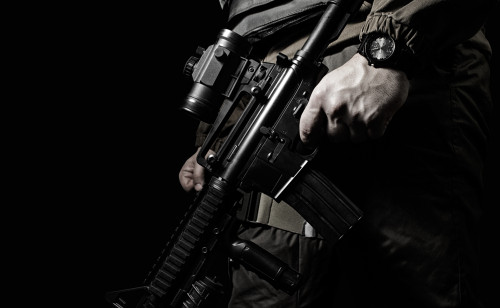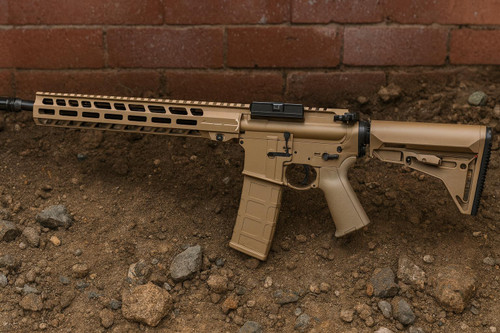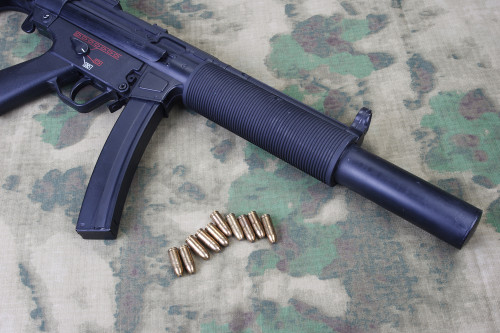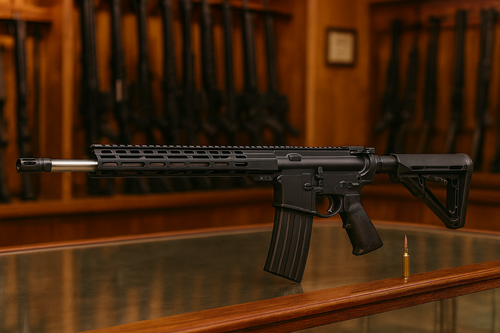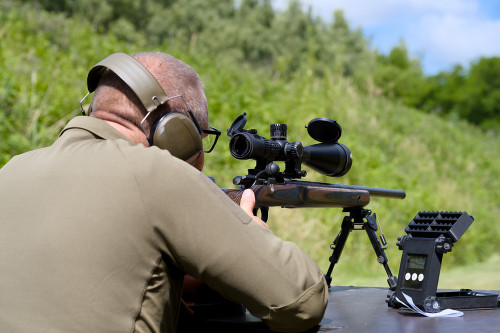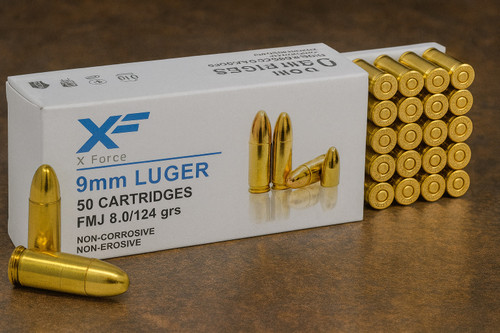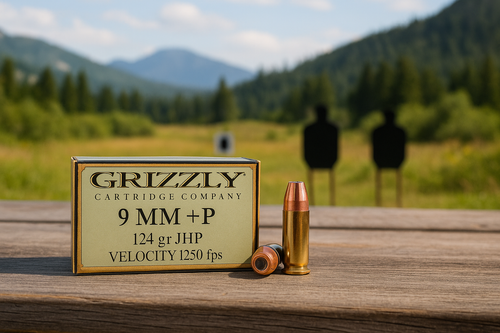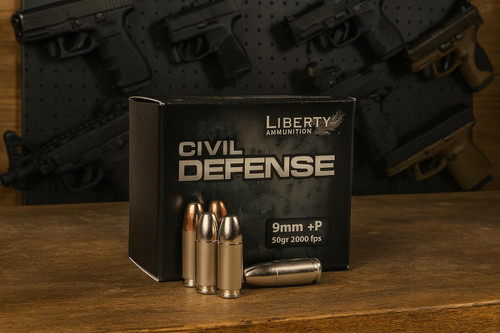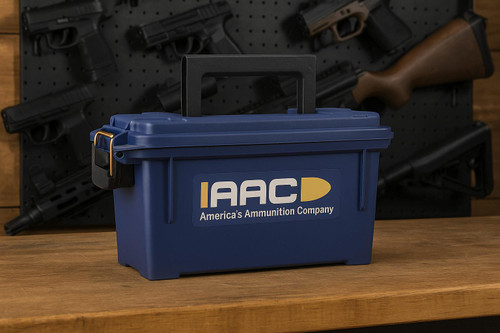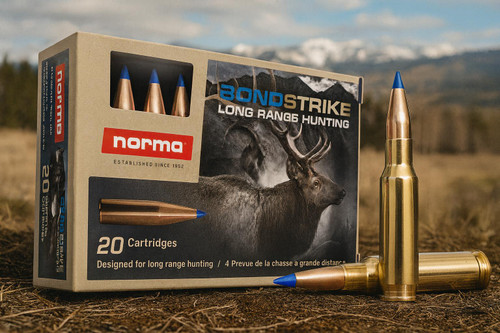Your pistol caliber choice greatly impacts how you experience shooting your gun. The size of bullet you pick influences recoil, accuracy, stopping power, and how much you spend on ammunition. Many first-time gun buyers feel confused when they see all the different options available. Learning about these differences helps you pick the right gun for what you need, whether you want protection, target shooting, or competition.
The term "caliber" just means how wide the bullet is that goes through your gun barrel. This tiny measurement changes everything about how your handgun works in real life. Each bullet size creates a unique shooting feel for the person holding the gun. Finding what works for your body size, skill, and what you plan to use it for matters more than following what's popular right now.
What Is Caliber Measurements
Caliber measures the internal diameter of a firearm's barrel, or more specifically, the diameter of the projectile it fires. This measurement comes in two common formats: inches (typically used in American designations) and millimeters (often used in European designations). For example, a .45 caliber bullet measures approximately 0.45 inches in diameter, while a 9mm bullet is 9 millimeters across.
When you see a caliber without "mm" specified, it's generally measured in inches. Numbers like .22, .38, and .45 represent fractions of an inch. The measurements might not always be exact due to historical naming conventions. Sometimes these numbers reflect the approximate bore diameter rather than the exact bullet size. This explains why certain calibers like .38 Special don't measure precisely 0.38 inches in diameter.
Components of a Cartridge

A complete cartridge consists of four main parts working together to create a functional round of ammunition. The bullet itself is just the projectile – the part that actually leaves the gun when fired. This projectile sits atop the case (or casing), a cylindrical container holding the gunpowder or propellant charge.
When you fire a gun, powder inside the case burns very fast. This creates hot gases that push the bullet through the barrel at high speed. The action starts at the back of the case with something called a primer. This small chemical mix lights up when hit by the firing pin.
A tiny flash from the primer shoots through a hole into the main case. This spark lights the powder and starts the whole process. Gun ammunition comes in two main types based on primer location. Rimfire ammo has primer spread around the edge of the case bottom. Centerfire cartridges feature a small primer cup placed right in the middle of the case base instead.
Modern shooters can easily tell these types apart by looking at the bottom of any cartridge. The design affects both price and how the ammo performs in different guns. Centerfire designs allow for stronger, more powerful loads compared to their rimfire counterparts..
The Most Common Pistol Calibers
Let's examine the most popular handgun calibers available today. Each has distinct advantages and drawbacks depending on your needs. These differences go beyond just size – they include factors like recoil, stopping power, magazine capacity, and cost per round.
1. .22 Long Rifle (.22 LR)

The .22 Long Rifle ranks as the world's most popular rimfire cartridge for good reason. Its small size delivers just enough power for hunting small game without the harsh recoil found in bigger calibers. Beginners often pick .22 LR pistols as their first firearms because the gentle recoil helps them learn proper shooting form without flinching.
Don't underestimate this tiny round despite its small appearance. These bullets weigh only 30-40 grains but zoom at speeds between 1200-1600 feet per second when fired. The modest energy output of 140-160 Joules works perfectly for taking small game at short distances but lacks the immediate impact needed for self-defense situations.
Cost remains the biggest selling point for the .22 LR in today's market. You'll pay just 4-7 cents per round compared to much pricier centerfire ammunition options. This bargain price lets you shoot hundreds of rounds during practice sessions without emptying your wallet. Regular practice builds muscle memory and shooting skills faster than any other training method available to new shooters.
2. .380 ACP (9mm Short)

The .380 ACP packs more power than a .22 LR but won't kick too hard when fired. Many people call it 9mm Short or 9mm Kurz because it looks like a smaller version of the 9mm Luger. Gun makers build small, easy-to-hide pistols with this round for people who carry for protection.
Most .380 ACP bullets weigh between 90-95 grains and fly at about 1000 feet per second from the barrel. This creates roughly 275 Joules of energy on impact with the target. Full-sized defense rounds hit harder, but the .380 lets you carry a smaller gun that's easier to control. You can shoot again quickly because the gun jumps less in your hand.
Practice ammo costs around 25 cents per round, making range time more expensive than with .22 LR but cheaper than bigger calibers. Modern hollow-point bullets make the most of this smaller round's stopping power in defensive situations. The .380 ACP gives you a good mix of a small gun size, manageable recoil, and enough power for self-defense needs.
3. 9mm Luger

The 9mm Luger has become the top handgun caliber around the world. About 60% of police departments across America now carry 9mm handguns as standard equipment. The FBI switched back to this round after trying bigger calibers for a few years. They found it hits the sweet spot between stopping power, bullet capacity, and ease of shooting.
You can find 9mm bullets in weights from 115 to 147 grains. These bullets zip through the air at speeds between 1000-1300 feet per second. Lighter bullets recoil a bit harder but travel faster upon firing. Heavier bullets feel more like a push against your hand and tend to go deeper into targets during tests.
Practice won't break your budget with 9mm rounds costing about 20 cents each. Most full-size pistols hold between 15-17 rounds in a single magazine. Modern hollow-point technology has greatly improved how 9mm bullets perform when they hit a target. This makes the 9mm an excellent choice for both new shooters and those with years of experience.
4. .40 S&W

The .40 S&W hit the market in the early 1990s as a middle ground between 9mm and .45 ACP. Police departments across the country quickly switched to this new option. It packed more punch than the 9mm but let officers carry more bullets than .45 ACP pistols. In recent years, its popularity has dropped because better 9mm ammo has caught up in performance.
Typical .40 S&W bullets weigh between 155-180 grains and zip through the air at 1000-1200 feet per second. These specs create 575-650 Joules of energy when fired, giving the round serious stopping power. Many consider it basically a shortened version of the 10mm cartridge. This comparison earned it the nickname "40 Short & Weak" among dedicated 10mm fans.
Practice ammo costs about 30 cents per round, making range sessions pricier than with 9mm. Shooters feel noticeably more recoil with the .40 S&W compared to 9mm pistols. This extra recoil can affect how quickly you get back on target for follow-up shots. Despite falling out of favor with many police departments, plenty of gun owners still trust the .40 S&W for self-defense, because of its proven stopping power.
5. .45 ACP

The .45 ACP holds a special place in American gun history. It became famous through the M1911 pistol used by the U.S. military for over 70 years. Many shooters love this round for its proven combat record and how it feels when fired.
Most .45 bullets weigh around 230 grains and travel between 900-1000 feet per second. This creates about 500-700 Joules of energy when fired. The bullet hits with a strong push rather than a sharp snap. Its wide diameter makes bigger holes than smaller bullets, which helps explain why people think it stops threats better.
Practice ammo costs about 25-30 cents for each round. Most full-size .45 pistols hold between 7-10 bullets in their magazines. The heavy, slow-moving bullets create less recoil than you might expect from such a big round. Many people choose the .45 ACP as much for its history as for how it performs.
6. 10mm Auto

The 10mm Auto ranks among the most powerful pistol rounds commonly available today. Gun makers created it in the 1980s to be stronger than 9mm but work in semi-auto pistols like .357 Magnum revolvers. Though never becoming super popular, hunters and outdoor folks who might face bears still favor it.
Standard 10mm bullets weigh about 180 grains and fly at roughly 1000 feet per second. This creates around 750 Joules of energy on impact. The power exceeds most other pistol rounds and comes close to some magnum revolver loads. Shooting this powerful round demands good technique and strong hands to control the heavy recoil.
Expect to pay about 60 cents per round for 10mm ammo. This higher price comes from smaller production runs and the extra materials needed. The 10mm works great for hunting with a handgun or protection in bear country. For everyday carry, most people find it too powerful and prefer something easier to shoot accurately.
7. 5.7x28mm

The 5.7x28mm cartridge stands apart from traditional handgun rounds in both design philosophy and performance characteristics. Developed by FN Herstal, this cartridge focuses on high velocity rather than bullet mass to achieve penetration. The unusual cartridge gained notoriety for its ability to defeat certain types of body armor in its military loading.
Civilian-legal 5.7x28mm ammunition typically uses lightweight 40-grain bullets traveling at exceptional velocities around 2300 feet per second. This combination produces approximately 500 Joules of energy with minimal recoil despite the high speed. The flat trajectory and extended effective range surpass most traditional handgun cartridges.
Limited to specific firearms like the FN Five-seveN pistol and the FN P90/PS90, this proprietary caliber costs around 50 cents per round. Magazine capacity runs exceptionally high, with standard magazines holding 20 rounds. The 5.7mm offers unique advantages including light recoil, high capacity, and excellent barrier penetration, though these benefits come with premium pricing and limited firearm options.
8. .38 Special

Police departments across America used the .38 Special for most of the 20th century. This revolver round served law enforcement from the 1920s until the 1990s. Semi-automatic pistols eventually replaced it for police work, but the .38 Special lives on in small concealed carry revolvers.
Bullets for this cartridge come in weights from 110 to 200 grains. They travel at modest speeds between 675-980 feet per second. The energy output ranges from 200-320 Joules, which works for self-defense but falls below modern service rounds. Full-size revolvers handle these rounds with mild recoil , yet lightweight carry models can feel quite snappy when fired.
The cost runs about 35-40 cents per round, making it pricier than common semi-auto ammo despite less power. Many shooters appreciate the simple, problem-free operation of revolvers loaded with these cartridges. An added bonus allows .38 Special ammunition to safely fire in .357 Magnum revolvers. This compatibility lets .357 Magnum owners practice with gentler .38 Special loads, though the reverse never works safely.
9. .357 Magnum

Developers created the .357 Magnum in 1935 as a stronger version of the .38 Special. This powerful revolver round quickly earned respect for its flat shooting and impressive stopping power. Many hunters, outdoorsmen, and home defenders still choose this cartridge even though police rarely carry it anymore.
Most bullets weigh between 125-180 grains and zip along at 1200-1500 feet per second. These specs produce serious energy between 700-1050 Joules – as powerful as many rifle rounds of similar size. The strong recoil demands good technique and regular practice, especially with smaller revolvers.
Each round costs around 80 cents, notably more expensive than other common handgun calibers. One major advantage comes from its ability to use .38 Special ammunition in the same gun. Many shooters practice with milder .38 Special loads to save money and reduce fatigue. They save full-power .357 Magnum rounds for hunting or defense situations where extra power matters most.
Advanced Calibers for Specific Needs
Beyond the common calibers, several specialized options serve niche purposes. The .44 Magnum gained fame through the Dirty Harry films and offers tremendous power for handgun hunting. The massive .50 Action Express (AE) powers the Desert Eagle pistol and represents one of the most powerful production handgun cartridges available.
These specialized calibers trade practicality for raw power. The significant recoil, limited firearm options, and high ammunition costs restrict their appeal to enthusiasts with specific needs or interests. For most shooters, standard calibers provide a better balance of performance characteristics for practical applications.
Choosing the Right Caliber for Your Needs
Selecting the ideal caliber involves honest assessment of several factors. Consider your physical capabilities – larger calibers generate more recoil that may affect your shooting accuracy. Think about your primary use case, whether self-defense, target shooting, or hunting. Factor in practical concerns like ammunition availability and cost, especially if you plan to practice regularly.
For beginners, starting with a 9mm or .22 LR makes the most sense. The 9mm offers an excellent balance of power, capacity, and manageable recoil in a defensive caliber. The .22 LR provides the lowest recoil and cost, perfect for developing fundamental skills without developing bad habits from anticipating heavy recoil.
The best advice? Try before you buy whenever possible. Visit ranges offering rental firearms and test different calibers to see what fits your shooting style. Personal comfort and confidence with your firearm matter more than choosing what others consider the "best" caliber. The gun you shoot accurately serves you better than a more powerful one you struggle to control.
Conclusion
Understanding pistol calibers represents an important step in becoming a knowledgeable firearms owner. Each caliber offers distinct advantages and compromises in terms of power, recoil, capacity, and cost. Your specific needs and preferences should guide your choice rather than marketing claims or popularity.
Remember that shot placement trumps caliber selection in defensive situations. Regular practice builds the skills necessary to place rounds accurately under stress. Choose a caliber that allows frequent practice within your budget and physical abilities. With proper training and the right ammunition, any of these common calibers can serve effectively for their intended purpose.
Whether you're gearing up for concealed carry, home defense, or range time, choosing the right pistol caliber is key. Ready to find the perfect match for your needs? See our selection of products here.
FAQs
What's the difference between centerfire and rimfire ammunition?
Centerfire ammunition has the primer in the center of the cartridge base, while rimfire ammunition has primer compound distributed around the rim. Centerfire cartridges generally deliver more power and allow for reloading of spent cases.
Can I shoot .38 Special ammunition in a .357 Magnum revolver?
Yes, you can safely fire .38 Special ammunition in a .357 Magnum revolver because the chambers are designed to accommodate both. Never attempt to shoot .357 Magnum ammunition in a .38 Special revolver as this could cause catastrophic failure.
What's the best caliber for a beginner?
Most beginners benefit from starting with either .22 LR for its minimal recoil and low cost or 9mm for its moderate recoil and practical defensive capabilities. These calibers let new shooters focus on developing proper technique without fighting excessive recoil.
How does bullet weight affect performance?
Heavier bullets generally penetrate deeper and retain energy better at distance but travel slower with more arcing trajectories. Lighter bullets typically travel faster with flatter trajectories but may penetrate less and can be more affected by wind.
What does grain (gr) mean when describing ammunition?
Grain is a unit of weight measurement equal to 1/7000 of a pound, used to indicate bullet weight. For context, a standard paper clip weighs about 1 grain, while common handgun bullets range from 30 to 230 grains.
Is bigger always better when choosing a caliber?
No, bigger isn't always better for handgun calibers. Larger calibers typically offer more power but also generate more recoil, reduce capacity, increase ammunition cost, and may decrease practical accuracy for many shooters. The best caliber balances power with your ability to shoot it effectively.



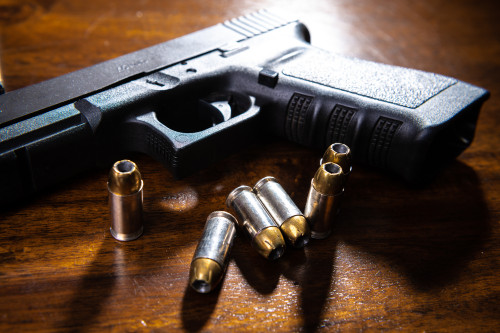
 Pro Armory Editorial Team
Pro Armory Editorial Team